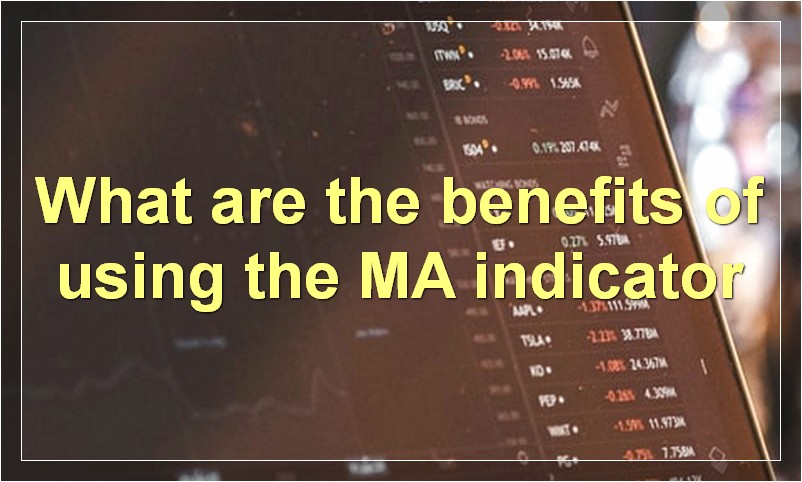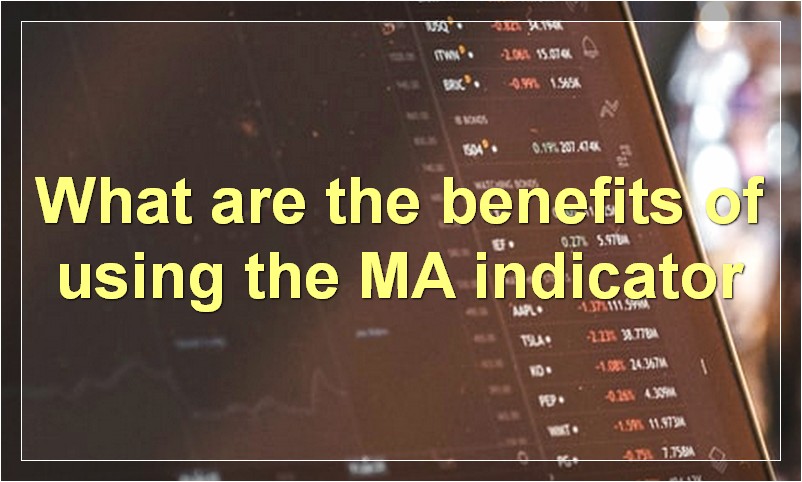If you’re looking to get ahead of the competition, you need to know about the MA indicator. This comprehensive guide will tell you everything you need to know about this essential tool.
What is the MA indicator
The moving average (MA) indicator is a widely used technical analysis tool that displays the average price of a security over a set period of time. It is commonly used to identify trend direction and to help smooth out price fluctuations. The MA indicator can be applied to any time frame, making it a versatile tool for traders and investors.
The MA indicator is calculated by taking the average of a security’s price over a set period of time. For example, if the period is set to 20, the MA indicator will display the average price of the security over the past 20 days. The MA indicator is often displayed as a line on a price chart, making it easy to spot trends and price fluctuations.
The MA indicator is a useful tool for identifying trend direction and spotting potential buying and selling opportunities. However, it is important to remember that the MA indicator is a lagging indicator, meaning that it only provides information on past prices. As such, it should be used in conjunction with other technical indicators to get a complete picture of market conditions.
What are the benefits of using the MA indicator

The MA indicator is a technical tool that is used by traders to help identify trends in the market. The MA indicator can be used to help identify both short-term and long-term trends. The MA indicator can also be used to help confirm other technical indicators. The MA indicator is a versatile tool that can be used in a variety of ways to help traders make more informed trading decisions.
How does the MA indicator work
The MA indicator is a tool that traders use to help them make decisions about when to buy and sell assets. The MA indicator is based on the moving average, which is a calculation that takes the average price of an asset over a certain period of time. The MA indicator can be used to help traders find trends in the market, as well as to identify potential support and resistance levels.
What are the different types of MA indicators
There are four types of moving averages: simple (also called arithmetic), exponential, weighted, and linear regression.
Simple moving average (SMA) is the unweighted mean of the previous n data points.
Exponential moving average (EMA) is a type of moving average that places a greater weight and importance on the most recent data points.
Weighted moving average is similar to exponential moving average, but it applies more weight to the most recent data points.
Linear regression is a statistical technique that attempts to find the best fit line for a given set of data points.
Which MA indicator is best for my trading strategy
There is no definitive answer to this question as different traders will prefer different technical indicators depending on their own trading strategy and style. However, some popular MA indicators that are commonly used by traders include the simple moving average (SMA), exponential moving average (EMA) and weighted moving average (WMA). Each of these indicators has its own strengths and weaknesses, so it is important to test out different MA indicators to see which one works best for your particular trading strategy.
How do I set up the MA indicator on my trading platform

The moving average indicator is a popular tool used by traders to identify trends and market momentum. There are many different ways to set up the MA indicator on your trading platform, but here is a quick and easy guide to get you started.
First, you will need to select the MA indicator from the list of indicators available on your platform. Once you have done this, you will need to specify the period over which the MA will be calculated. The most common periods used are 10, 20, 50, 100 and 200.
Next, you will need to select the type of MA you want to use. The two most common types are simple MA and exponential MA. Simple MA gives equal weight to all data points in the specified period, while exponential MA gives more weight to recent data points.
Finally, you will need to specify the price source that will be used for the MA calculation. The most common price sources are closing price, opening price, high price and low price.
Once you have all of these settings configured, you can then start using the MA indicator to help you make trading decisions.
What are the key levels for the MA indicator
The key levels for the MA indicator are 20, 50, and 200. The 20 level is considered overbought, while the 50 and 200 levels are considered to be neutral. The indicator is used to identify trend changes, as well as to confirm trends.
How do I interpret the MA indicator
The MA indicator is a technical indicator that is used to gauge the strength of a stock’s price movement. It is calculated by taking the average of the stock’s closing prices over a certain period of time. The MA indicator can be used to identify trends and make trading decisions.
What news events can impact the MA indicator
There are a few news events that can impact the MA indicator:
1) If there is a major economic release, like GDP numbers or employment data, this can move the markets and impact the MA indicator.
2) If there is a major political event, like an election or a policy announcement, this can also move the markets and impact the MA indicator.
3) If there is a natural disaster or other major event that disrupts the normal flow of market activity, this can also impact the MA indicator.
Is the MA indicator reliable
The MA indicator is a reliable tool for identifying market trends and making investment decisions. It is based on a simple moving average of past prices and is widely used by traders and investors. The indicator is easy to interpret and can be used in conjunction with other technical indicators to make more informed investment decisions.

